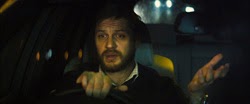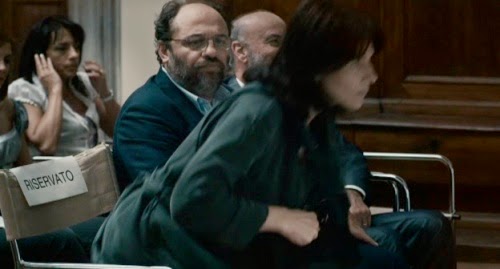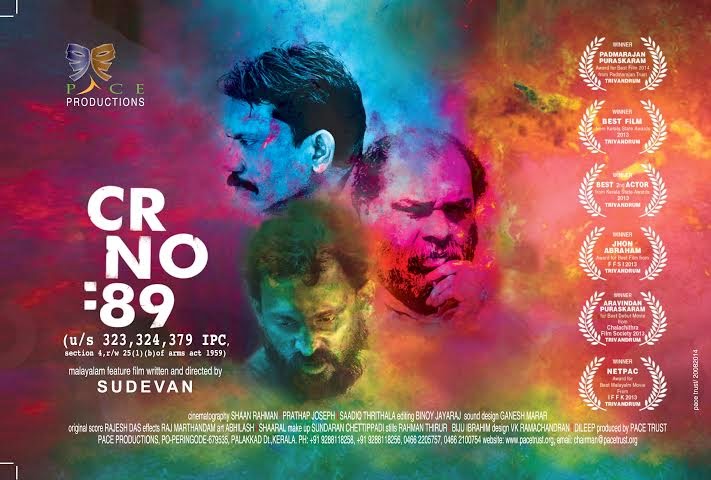“My films are not fiction films but about fiction”---Raúl Ruiz
“In today’s cinema
there is too much light, it is time to return to the shadows”--- Raúl Ruiz
in his book ‘Poetics of Cinema’
“I chose to take
refuge in the dramaturgy of dreams” ---Raúl Ruiz
These three quotations of Raúl Ruiz are important starting
points for analyzing the penultimate cinematic work of the talented Raúl Ruiz--
Mysteries of Lisbon. Ruiz had
already made over a hundred movies and he made Mysteries of Lisbon knowing well that his days were numbered after
being diagnosed with a life threatening liver tumour. He completed the film while recovering from a
successful liver transplant, only to die soon after, ironically from a lung
infection. While one can sense the
brilliance of this cinematic work, it is difficult to distinguish what credit ought
to be attributed to the Portuguese
novelist Camilo Castillo Branco, who wrote the book in 1854, without having
read the work (the English translation of the book is not easily available), and
what needs to be actually credited to director Ruiz. Despite that conundrum, there are obvious
pointers to what was definitely the contribution of Ruiz. The following
analysis pertains to those aspects of the movie that are predominantly
attributable to Ruiz alone.
 |
| Young Joao looks at his 'mother' in the company of Father Dinis |
 |
| Father Dinis and Joao's "mother" (Maria Joao Bastos) after she becomes a nun |
Mysteries of Lisbon
is a 272 minute film unfolding a convoluted and yet interesting tale narrated
by a tormented epileptic orphan Joao under the care of a priest named Father
Dinis and some nuns. The tale is mostly set in the early 19th
century Portugal. Priests and nuns there often have led colourful lives,
preceding their final vocation. For author Branco, who was by all accounts a
religious person, the Church in Portugal at that time provided sanctuary for
orphans, widows, and those in trouble. Either Branco or Ruiz, or both together,
use the puppet paper theatre as a prop and as a narrative punctuation device for
the epileptic Joao to imagine vivid tales of grown-ups in aristocratic Portugal,
who are all somehow connected to Father Dinis (Adriano Luz) and a lady who
claims to be his mother, who has gifted him the puppet paper theatre while
recovering from an epileptic attack. It is thus not surprising that characters
in Joao ‘s world are closely interrelated. (For example, Joao’s “mother’s“ husband’s mistress turns up later in the tale as
the wife of Albert de Magalhaes, another important person in Joao’s life story.)
In that process, Branco examines the social importance Portuguese gave to the
firstborn in a family, how paternal titles made or unmade individuals, how
fathers wreck the love lives of their daughters for personal benefit only to
rue their actions much later in life and the lack of fidelity of abusive
husbands.
Any approach to appreciate Ruiz’ cinema cannot dissociate it
from Ruiz’ life--a Chilean director who
chose self-exile in the early Seventies following the US-supported coup that
removed the democratically elected Salvador Allende while installing the
Chilean armed forces Commander Augusto Pinochet in power instead. Today, the world knows the late Pinochet was implicated
on over 300 charges of human rights violations. The multi-talented Ruiz fled
from Chile under Pinochet hopping from one European country to another, frenetically
writing plays and books and making over a 100 films. Each of these works
reflected his distaste for the armed forces that took power in Chile and his
wistful love of Chile, a country he could not return to work as before. Even though Mysteries of Lisbon is predominantly set in Portugal and France,
there is a sequence where the ‘orphan’ Joao ‘appears’ to end his last days in
Brazil, not far from Ruiz’ homeland Chile. Ruiz forever dreamt of returning to
Chile. As per his wishes, Ruiz was buried in Chile. Such indirect references
abound in each work of Ruiz. While Mysteries
of Lisbon is essentially about dreams, the final sequence reiterates the
importance of dreams. At the end, the
colours of the screen fade to merge with empty white light. The film of shadows
comes to a close. Ruiz transcends Branco’s words using cinematic effects.
A casual viewer of Mysteries
of Lisbon would not associate the work with surrealism and magic realism more
obvious in Ruiz’ works, such as, That
Day (Ce jour-la) (2003) and Three
Crowns of the Sailor (1983). Early into Mysteries of Lisbon, there is a short sequence where another kid of
Joao’s age leads Joao to a spot behind the hedges of the orphanage where some
men have been hanged in public view. The kid claims that one of the hanged men
is a thief and his father. The viewer can see the hanged individuals.
Joao is crestfallen as he has been accused of being the son of a thief and confused but does not respond as one would expect. Father Dinis, who accompanies young Joao and the
kid who is showing Joao the hanging, is merely studying Joao’s face rather than the hanged persons, and he leads
Joao back impassively after Joao has taken in the scene of the hanged individuals. Where is the
surrealism or magic realism? Could this
be a real hanging, so close to the orphanage? If it was real, why is Father
Dinis not appearing to be concerned with the hanging? Why is he only concerned
about Joao? Why do doors open and close by themselves in the film? Why do certain
paintings come alive for Joao? Why does an important transaction between two
friends take place in a room with two massive religious frescoes on the walls
and just two chairs, devoid of any other furniture? Why does Ruiz employ two
Joaos during the duel scene, one committing suicide after pensively walking in
the background, and another active Joao who partook in the duel going on to
live another day with honour? The answers to each of those questions are
“mysteries” that contribute to the richness of the film and help the viewer to
unravel Ruiz’ complex movie Mysteries of
Lisbon with its unusual ending.
Towards the end of Ruiz’ Mysteries of Lisbon, the grown up Joao encounters Elisa de Montfort (Clotilde Hesme). She pauses in her walk and comes to Joao
to state, “You lacked courage, my dear.” This is a sequence which could have been
typical of Ruiz’ cinema referring to Ruiz’ political courage or it could also
have been Branco’s idea. While the lack of identity is a problem for Joao the
orphan, the lack of citizenship of Ruiz is perhaps one reason for the director
to choose to make this film, which mirrors his own life.
 |
| Riches to rags: The teenaged Joao encountering a once proud Marquis reduced to beggary searching for the 'mausoleum' of his daughter |
The cinematography (André Szankowski ) of the film is
stunning. The camera teases the viewer. The camera goes under a glass table to
capture the torn pieces of a letter that is never read. Stories within a story deliberately
show individuals with unreal beards and make-up, while the main story in
contrast never compromises on quality. Dreams within dreams are treated
differently by Ruiz.
 |
| Using the paper puppet theater to punctuate Acts |
Mysteries of Lisbon is essentially a brilliant treatise on memories. At the end of the movie the viewer is shown a tired and graying Joao who needs a walking stick, but no taller than a teenager, narrating his tale to a scribe. He says “I was 15 years old and I didn’t know who I was. I went on no outings or holidays. I received no presents. I don’t know how long it has been since I lost consciousness. And the moment I opened my eyes. I thought I dreamt it all“, while lying down on a cot broad enough for a kid. Doors close by themselves and the screen brightens gradually to be covered by pure white light.
This film won the San Sebastian Festival Silver Seashell for
Best Director and the Sao Paulo Festival Critics award for best film. The film
was carved out by Ruiz from several episodes he made for the Portuguese TV.
P.S. Mysteries of Lisbon
is the first film of Ruiz to be
included in the author’s top 100 films. It was also one of the top 10 films of 2011 for the author and one of the 15 top films of the 21st Century for the author. Ruiz’ earlier work,
That Day (Ce jour-la) (2003) was reviewed earlier on this blog. Ruiz’ last film that
he completed before his death, La Noche
de Efrente (Night Across the Street)
(2012), was one of the top 10 films of 2012 for the author.






































